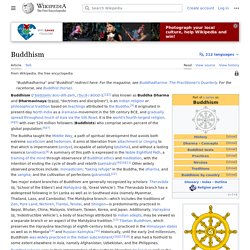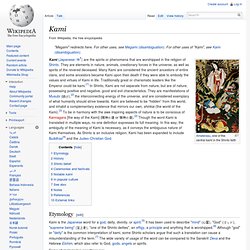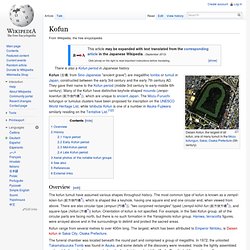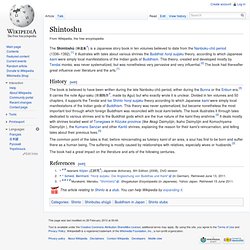

Buddhism. Religion founded by the Buddha Buddhism (, ) is an Indian religion based on a series of original teachings attributed to Gautama Buddha.

It originated in ancient India as a Sramana tradition sometime between the 6th and 4th centuries BCE, spreading through much of Asia. It is the world's fourth-largest religion[3] with over 520 million followers, or over 7% of the global population, known as Buddhists.[6] Buddhism encompasses a variety of traditions, beliefs and spiritual practices largely based on the Buddha's teachings (born Siddhārtha Gautama in the 5th or 4th century BCE) and resulting interpreted philosophies.
Two major extant branches of Buddhism are generally recognized by scholars: Theravāda (Pali: "The School of the Elders") and Mahāyāna (Sanskrit: "The Great Vehicle"). Theravada has a widespread following in Sri Lanka and Southeast Asia such as Cambodia, Laos, Myanmar and Thailand. Shinto. Shinto priest and priestess.

Shinto (神道, Shintō?) , also kami-no-michi,[note 1] is the indigenous religion of Japan and the people of Japan.[2] It is defined as an action-centered religion,[3] focused on ritual practices to be carried out diligently, to establish a connection between present-day Japan and its ancient past.[4] Founded in 660 BC according to Japanese mythology,[5] Shinto practices were first recorded and codified in the written historical records of the Kojiki and Nihon Shoki in the 8th century.
Still, these earliest Japanese writings do not refer to a unified "Shinto religion", but rather to a collection of native beliefs and mythology.[6] Shinto today is a term that applies to the religion of public shrines devoted to the worship of a multitude of gods (kami),[7] suited to various purposes such as war memorials and harvest festivals, and applies as well to various sectarian organizations.
According to Inoue (2003): Japanese mythology. Urashima Tarō. Urashima Tarō (浦島 太郎?)

Is a Japanese legend about a fisherman who rescues a turtle and is rewarded for this with a visit to Ryūgū-jō, the palace of Ryūjin, the Dragon God, under the sea. He stays there for three days and, upon his return to his village, finds himself 300 years in the future. History[edit] Story[edit] One day a young fisherman named Urashima Tarō is fishing when he notices a group of children torturing a small turtle. Tarō stays there with her for a few days, but soon wants to go back to his village and see his aging mother, so he requests Otohime's permission to leave. When he goes home, everything has changed. Variations[edit] As always with folklore, there are many different versions of this extremely famous story. Commemoration[edit] A shrine on the western coast of the Tango Peninsula in northern Kyoto Prefecture, named Urashima Jinja, contains an old document describing a man, Urashimako, who left his land in 478 A.D. and visited a land where people never die.
List of Japanese deities. Kami. Amaterasu, one of the central kami in the Shinto faith Kami (Japanese: 神?)

Are the spirits or phenomena that are worshipped in the religion of Shinto. They are elements in nature, animals, creationary forces in the universe, as well as spirits of the revered deceased. Many Kami are considered the ancient ancestors of entire clans, and some ancestors became Kami upon their death if they were able to embody the values and virtues of Kami in life. Traditionally great or charismatic leaders like the Emperor could be kami.[1] In Shinto, Kami are not separate from nature, but are of nature, possessing positive and negative, good and evil characteristics. Etymology[edit] Some etymological suggestions are: Gender is also not implied in the word Kami, and as such it can be used to reference either male or female. Kotoamatsukami. Japanese Myth. Japanese Proverbs and Sayings - Daniel Crump Buchanan.
Kofun. Kofun (古墳, from Sino-Japanese "ancient grave") are megalithic tombs or tumuli in Japan, constructed between the early 3rd century and the early 7th century AD.

They gave their name to the Kofun period (middle 3rd century to early-middle 6th century). Many of the Kofun have distinctive keyhole-shaped mounds (zenpo-koenfun (前方後円墳?)) , which are unique to ancient Japan. The Mozu-Furuichi kofungun or tumulus clusters have been proposed for inscription on the UNESCO World Heritage List, while Ishibutai Kofun is one of a number in Asuka-Fujiwara similarly residing on the Tentative List.[1][2] Overview[edit] The kofun tumuli have assumed various shapes throughout history. Kofun range from several metres to over 400m long. Kojiki. Kojiki (古事記?

, "Record of Ancient Matters") is the oldest extant chronicle in Japan, dating from the early 8th century (711–712) and composed by Ō no Yasumaro at the request of Empress Gemmei.[1] The Kojiki is a collection of myths concerning the origin of the four home islands of Japan, and the Kami. Along with the Nihon Shoki, the myths contained in the Kojiki are part of the inspiration behind Shinto practices and myths, including the misogi purification ritual.[2][3][4][5] Structure[edit] The Kojiki contains various songs/poems. Shintoshu. The Shintōshū (神道集?)

Is a Japanese story book in ten volumes believed to date from the Nanboku-chō period (1336–1392).[1] It illustrates with tales about various shrines the Buddhist honji suijaku theory, according to which Japanese kami were simply local manifestations of the Indian gods of Buddhism. This theory, created and developed mostly by Tendai monks, was never systematized, but was nonetheless very pervasive and very influential.[2] The book had thereafter great influence over literature and the arts.[1] History[edit] The book is believed to have been written during the late Nanboku-chō period, either during the Bunna or the Enbun era.[3] It carries the note Agui-saku (安居院作? , made by Agui) but who exactly wrote it is unclear.
The common point of the tales is that, before reincarnating as tutelary kami of an area, a soul has first to be born and suffer there as a human being. Nihon Shoki.